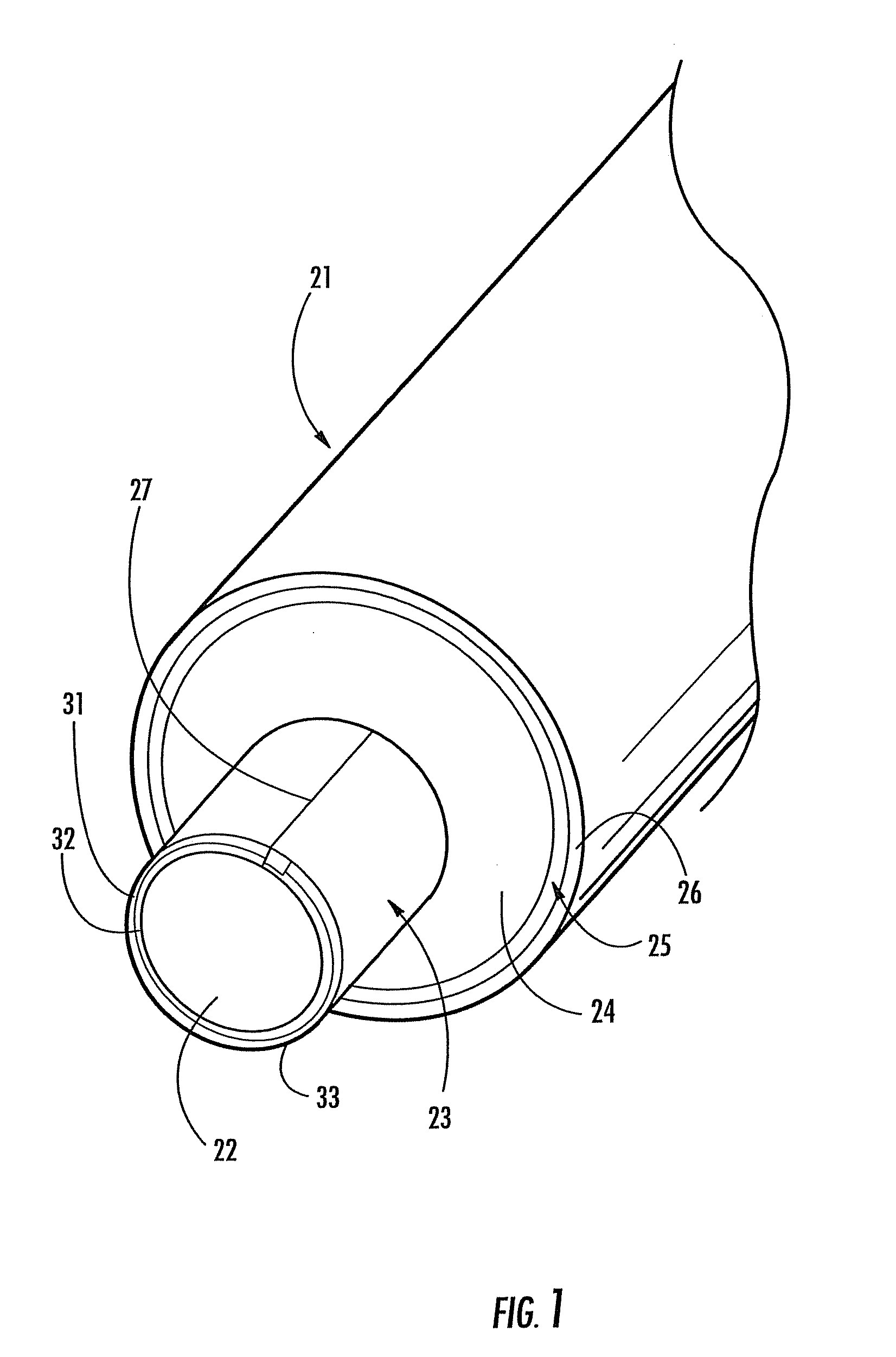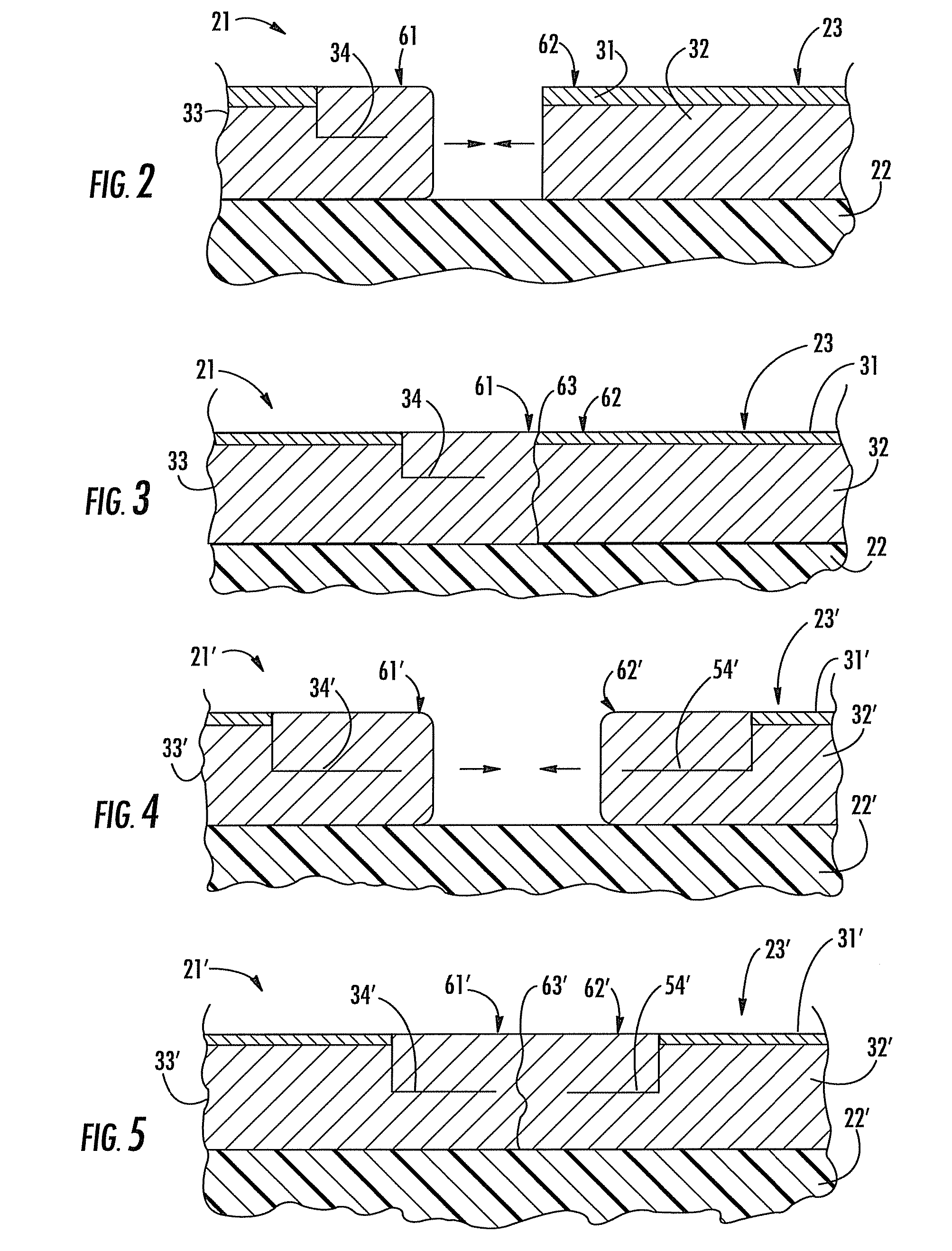Method of making a coaxial cable including tubular bimetallic inner layer with folded over edge portions
a coaxial cable and bimetallic inner layer technology, applied in the field of communication, can solve the problems of difficult welding of conventional bimetallic layer, relatively difficult welding of joint, and relatively high cost of inlaid bimetal inner conductors to manufacture, etc., and achieve the effect of easy welding
- Summary
- Abstract
- Description
- Claims
- Application Information
AI Technical Summary
Benefits of technology
Problems solved by technology
Method used
Image
Examples
Embodiment Construction
[0037]The present invention will now be described more fully hereinafter with reference to the accompanying drawings, in which preferred embodiments of the invention are shown. This invention may, however, be embodied in many different forms and should not be construed as limited to the embodiments set forth herein. Rather, these embodiments are provided so that this disclosure will be thorough and complete, and will fully convey the scope of the invention to those skilled in the art. Like numbers refer to like elements throughout, and prime notation is used to indicate similar elements in alternative embodiments.
[0038]Referring initially to FIGS. 1-3, a coaxial cable 21 in accordance with the present invention is described. The coaxial cable 21 illustratively includes an inner conductor 23, an outer conductor 25, and a dielectric material layer 24 between the inner and outer conductors. The inner conductor 23 illustratively includes a tubular bimetallic layer 33 having a pair of op...
PUM
| Property | Measurement | Unit |
|---|---|---|
| thickness | aaaaa | aaaaa |
| melting point | aaaaa | aaaaa |
| conductivity | aaaaa | aaaaa |
Abstract
Description
Claims
Application Information
 Login to View More
Login to View More - R&D
- Intellectual Property
- Life Sciences
- Materials
- Tech Scout
- Unparalleled Data Quality
- Higher Quality Content
- 60% Fewer Hallucinations
Browse by: Latest US Patents, China's latest patents, Technical Efficacy Thesaurus, Application Domain, Technology Topic, Popular Technical Reports.
© 2025 PatSnap. All rights reserved.Legal|Privacy policy|Modern Slavery Act Transparency Statement|Sitemap|About US| Contact US: help@patsnap.com



